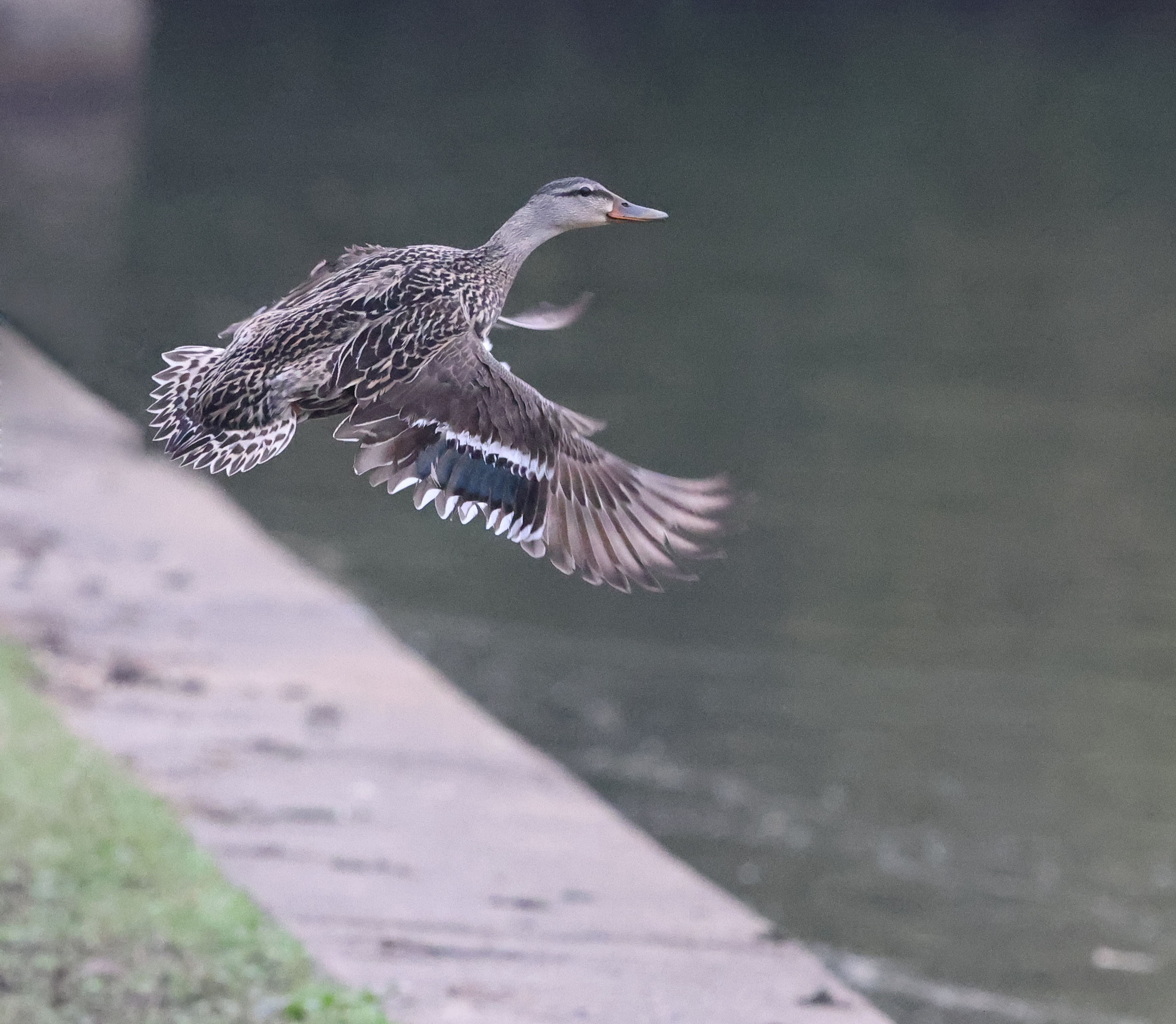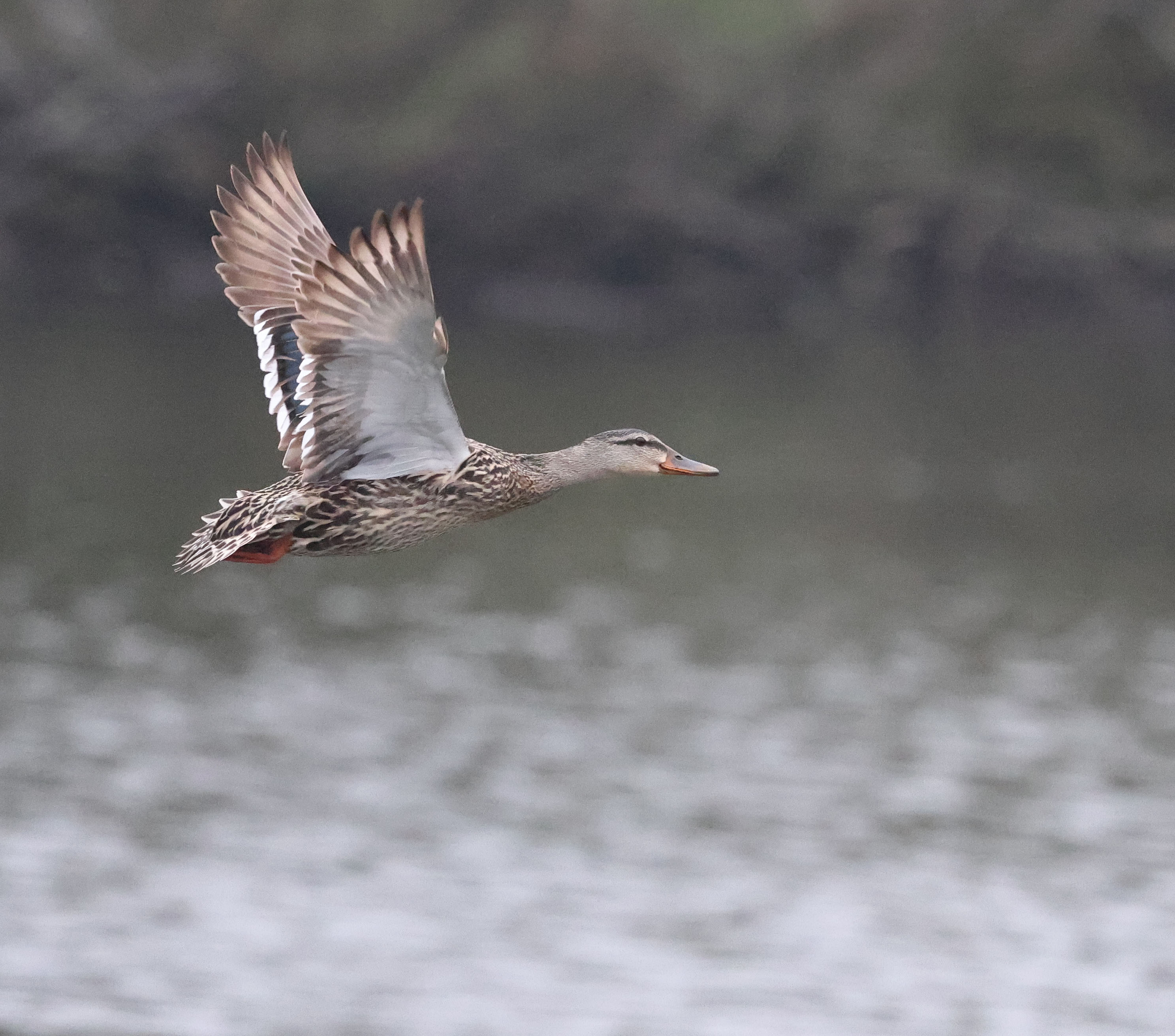Before we leave off reviewing the Canon full-frame mirrorless EOS R5, I want to share with you a great B&H Photo and Video podcast. The title: “Mirrorless System Advantages for Bird Photography.” It features 2 professional bird photographers, one of whom has made the switch from DSLR’s to the mirrorless R system and one of whom is hesitant. It’s billed as a “fun-spirited and well-articulated debate.” You’ll really enjoy the back-and-forth, and you’ll learn a lot.
Photographing Birds
I also want to say something more about the female Mallard flight shot in “A Game Changing Bird Photography Camera, Part Two.” That post was actually the third install of my 3-part R5 review. The female was on the pond bank with 3 males. As one of the males began to give chase, I sensed opportunity. I double-checked my R5 settings and got into position. I figured she’d probably take flight over the water, and she did. Knowing bird behavior and knowing what to expect really helped.

I’m reminded of a conversation I had a while back with an FM Forums member. He wrote: “It really helps to know birds well when trying to photograph them. I was raised by a birder and have been birding my whole life.” I replied, “It’s tough to shoot birds well if you don’t know them. I recently came across this about shooting lightning: ‘The more you understand lightning, how to anticipate it and what to do in its presence…the more success you’ll have photographing lightning.’ The same thing holds true for shooting birds. The more you understand them, can predict their movements, and know how to conduct yourself around them, the more success you’ll have photographing birds.”
Here’s another photo of the female Mallard (sans bulkhead). Not too shabby for a photo taken @ ISO: 12800. Whether you use a mirrorless camera or a DSLR—if you’re a wildlife photographer, nothing can take the place of a full-frame camera with high ISO capability.

Birds’ Stories
Now to more birds’ stories—or at least a few more bird’s stories. Wildlife photographer and creator of the new Cornell Lab Of Ornithology beginning bird photography course, Melissa Groo, considers herself a “wildlife biographer.” I consider myself one, too. Laura Mae, a birding friend, recently sent me this, as if to confirm: “David, Thank you for telling birds’ stories through photos.” I look for storytelling opportunities every time I head out with my camera. For me and many other photographers, “it’s all stories, really,” and it’s stories that matter.
Laura sent me that message in response to a photo I’d taken and shared of a Song Sparrow with a tick attached to its head just below the eye. Here’s the photo. Notice how the eye looks misshapen. Some who saw the photo said things like, “Darn tick” or “Ughhhh.” Others said “No problem” and that the tick would fall off or its mate would pull it off.

Now, here’s a photo that tells a story of spring and new beginnings. This is a male House Wren that had returned from its wintering grounds to breed at the Elizabeth River Project conservation area at Money Point in Chesapeake, VA. It appeared to be marking or defending it’s territory as it flew and sang from one low perch to another.

Here’s how the little bird sounded:
But there’s a deeper story here. The return of the House Wren, like the return of other birds, represents the “repeated refrains of nature” that Rachel Carson spoke about. Ms. Carson wrote: “There is something infinitely healing in the repeated refrains of nature – the assurance that dawn comes after night, and spring after winter.” And in my book, few things represent those repeated refrains better and bring more comfort and reassurance than the return of birds and birdsong in the spring.

Your photos most definitely tell stories Dave and you’ve told some enchanting ones today!
LikeLike